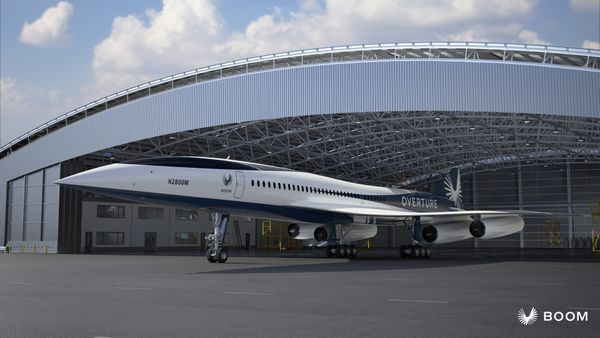In 2007, perhaps the most unique airline in American history took flight: Pet Airways. What began as an idea when a couple was deciding how to fly their dog surprisingly turned into a full-fledged hard product.
The concept was simple: an airline filled only with pets, who receive first-class treatment, regular bathroom breaks, and around-the-clock care. The cheapest prices started around $150 but rose quickly depending on animal size and total distance flown. Average prices per pet were around $500 and could hit upwards of $1200 for larger pets. This product wouldn’t last though, regardless of how lavish the airline became.

Operations only lasted four years - by 2012, the company had run into financial problems, with successive quarterly losses and not one period of positive cash flow since the airline's launch. But what actually happened behind the scenes at Pet Airways?
Scope
Pet Airways served eleven destinations:
Mesa, AZ (MSC)
Hawthorne, CA (HHR)
Broomfield, CO (BJC)
Fort Lauderdale (FLL)
Atlanta/Peachtree (PDK)
Chicago-Midway (MDW)
Baltimore (BWI)
Omaha (OMA)
Farmingdale, NY (FRG)
Prior to ceasing operations, the airline intended to hit 25 destinations served. Notably, most of the destinations are supplementary airports to larger cities, with some not even receiving commercial flights. Presumably, this meant landing fees and hanger rental were cheaper for lower total operating costs.
Business Model
Pet Airways based its business model on the idea that flying pets in the cargo hold is inherently dangerous; in fact, it is extraordinarily dangerous. The airline claims that over 5,000 animals are injured or killed in cargo holds; it is unknown if this is annually or monthly. Temperatures in the cargo hold reach upwards of 140 degrees Fahrenheit, which some dogs can’t withstand.
The airline also offered many premium services to attract customers who care deeply about quality of life for their pets. Already justifying a safer experience for the pet, the flights were marketed as more comfortable. Pets got a “first class” seat with long walks before boarding, bathroom breaks, fresh air, and even a play area for pets.
Failure
Perhaps one of the key weaknesses of the airline was its overhead costs. Pets can’t pay for ancillary revenues, and the airline didn’t charge much for extras for pets. Therefore, introductory fares for pet transport were quite high, as noted earlier at $150 minimum. As such, most paying customers were wealthier or seeking emergency pet transport from a shelter or hospital stay. Attempting to enter new markets and defeat competition with lower prices, just as a low-cost passenger carrier might do, did not remain feasible.
The second key weakness is the selling point itself - is the cargo hold really that bad? For starters, airlines nowadays offer climate-controlled cargo holds, so few risks remain. Additionally, many families and pet owners simply have other equally compelling options: drive the pet or meet halfway at another destination.

Most importantly, the route network was limited. With only twelve airports, much of the US was excluded from using Pet Airways. Additionally, the routes offered were fixed and not based on a subscription or on-demand model where a flight from any two airport combinations is offered. Therefore, someone who wants to fly a pet from say, Portland (PDX) to Charlotte (CLT), would be forced to fly the pet from Los Angeles (LAX) to Baltimore (BWI) and figure out the rest itself. Simply put, the demand for the few fixed routes is limited, and having an on-demand network with smaller planes may have proved more profitable.
Conclusion
The airline says they are attempting to resume flights post-COVID (2021), and while two years have passed since that proposed date, the airline’s new website and stated plans have not been updated.
The Hidden Pilot Problem That Could Make or Break Boom's Supersonic Jet » Emirates Orders 65 Additional Boeing 777-9 at Dubai Airshow 2025 » Meet the Startup Building the Plane Everyone Else Said Was Impossible »
Comments (0)
Add Your Comment
SHARE
TAGS
STORIES Pet Airways Pets Failure Economics Downfall AirlinesRECENTLY PUBLISHED
 Buraq Air Expands Fleet with New Airbus A320neo Aircraft Order
Buraq Air has made a significant commitment to expanding its fleet with an order for 10 Airbus A320neo aircraft, reflecting its focus on modernization and sustainability in the aviation sector.
NEWS
READ MORE »
Buraq Air Expands Fleet with New Airbus A320neo Aircraft Order
Buraq Air has made a significant commitment to expanding its fleet with an order for 10 Airbus A320neo aircraft, reflecting its focus on modernization and sustainability in the aviation sector.
NEWS
READ MORE »
 Emirates Orders 65 Additional Boeing 777-9 at Dubai Airshow 2025
Emirates has announced an order for an additional 65 Boeing 777-9X aircraft today at the Dubai Airshow. This deal, valued at USD $38 billion, brings the airline's total 777-9X order count to 270 units. The agreement also includes options to convert orders 777-8 or 777-10 variants.
NEWS
READ MORE »
Emirates Orders 65 Additional Boeing 777-9 at Dubai Airshow 2025
Emirates has announced an order for an additional 65 Boeing 777-9X aircraft today at the Dubai Airshow. This deal, valued at USD $38 billion, brings the airline's total 777-9X order count to 270 units. The agreement also includes options to convert orders 777-8 or 777-10 variants.
NEWS
READ MORE »
 The Hidden Pilot Problem That Could Make or Break Boom's Supersonic Jet
AeroXplorer recently spoke with Tristan Brandenburg, Boom Supersonic's Chief Test Pilot. In conversation, it became evident that in the months leading up to Overture's rollout, one of Boom's most complex challenges might not be in the wind tunnel, but in the cockpit.
STORIES
READ MORE »
The Hidden Pilot Problem That Could Make or Break Boom's Supersonic Jet
AeroXplorer recently spoke with Tristan Brandenburg, Boom Supersonic's Chief Test Pilot. In conversation, it became evident that in the months leading up to Overture's rollout, one of Boom's most complex challenges might not be in the wind tunnel, but in the cockpit.
STORIES
READ MORE »



